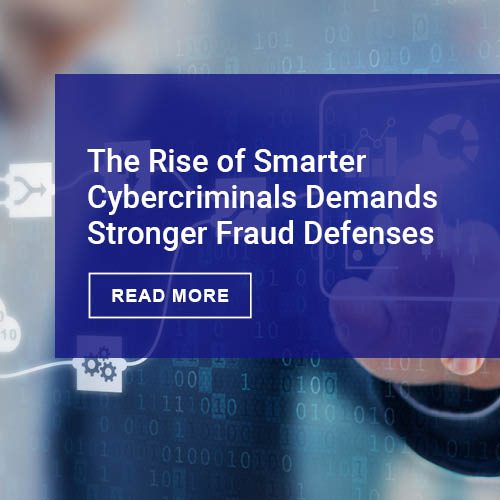What’s the best way to disburse funds? Aha! It was a trick question. The answer depends less on you, the party sending the money, and more on who’s receiving it. For banks thinking about new ways to do disbursements, especially digital ones, and especially on the global stage, it’s less about who offers the best option; it’s more about who offers the most options.
This probably sounds overwhelming if you’re a bank that was hoping to hop on the hottest disbursements bandwagon and keep abreast of the competition that way. The reality is, there’s no way to predict what the hottest bandwagon will be tomorrow, next month, or next year. It’s like trying to pick the next hottest band. For instance, I never saw the return of Toto’s Africa coming, but I am so glad it did.
A few years ago, experts might have put their money on PayPal as the sole digital payment method of the future, but today, Venmo has carved out its own sizeable niche in the world of small, instant peer-to-peer payments, especially with the kids. Meanwhile out East, Alipay has come out of nowhere over the past three to four years, and WeChat Pay is now following the same path. Trying to guess which will become the future’s “best” disbursement method is just that: a guess. Modern consumers want to choose how they will receive payouts: Venmo, Zelle, PayPal, Alipay, WeChat Pay, debit cards … or, who knows, maybe something we’ve never even heard of yet.
The only real option for banks, then, is to offer every option, now and in the future. And that’s every bit as complicated as it sounds. If you are a bank starting to think about what this means, good: The time is now to start figuring out how you will not only keep up with the competition but, hopefully, pull ahead in the disbursements race. Yet it’s also important to do it right. That means thinking about the big questions and challenges before taking action. Here are some factors to consider:
The Identity Challenge
When a large corporation, bank, marketplace, merchant, government, or insurance provider needs to send a digital disbursement to an individual or a small business, it’s not as simple as mailing someone a check at the address they have on file or submitting a direct deposit to a bank account number – in many cases, the information needed for these seemingly straightforward, “old-fashioned” payouts may not even be available.
Instead, banks may have to use a mobile phone number, an email address, a card number, or some other data point to identify participants.
Even once the end recipient has been authenticated, there is an inherent insecurity in digital communication channels. Email, SMS messaging, and social networks can all be intercepted by a savvy hacker. The benefit of digital is that it’s simple and quick, which are key components to satisfying the modern appetite for real-time everything. However, it’s always safer to assume that someone is watching.
(Sidenote: Funny how opening someone else’s snail mail would get a person in trouble, but with everything else, insecurity is just an accepted cost of doing business.)
Upping the Ante on KYC
When dealing with something like insurance payouts, the bank involved on the receiving end knows something about the policyholder, so you, the bank sending the money, are relatively safe. But if someone’s video of a cat went viral on a marketplace and your bank has to pay them with nothing more than an email address, compliance becomes a very real concern. What if that person is on a sanctions list, or lives in a sanctioned country?
When working with digital endpoints, it’s never safe to assume that the other side is doing bank-like things about compliance. This means changing how you think about KYC and KYCC. Your organization must find a way to be sure that it’s only paying Beth from Oregon for the cute video of Fluffy and not accidentally papering the pockets of criminals or worse, and that remains true for every single payout method you want to offer (and don’t forget, that’s actually all of them).
The Trouble of Timing
Speaking of real-time everything, let’s talk about how current systems fall short of meeting that expectation. Current payment systems work in terms of business days and batches, but that’s not good enough anymore. Recipients expect payouts in real-time, 24 by 7, 365.25 days a year and moreover, banks often like the instant gratification of a digital process because it offers transparency into problems: they can tell if there is something wrong right away.
Liquidity is another major challenge of meeting real-time expectations with a digital endpoints. Banks must remember they are not dealing with typical bank net settlement partners who have large balance sheets and tons of liquidity; these partners need cash ahead of time, which means nostro and escrow-type arrangements. On top of that, the partners providing these arrangements are not on SWIFT or any other network that would allow banks to check balances and conduct clearing transactions in all the usual ways.
These organizations may also go just as quickly as they came, so it may not be wise to let them hold too much of your money (or your clients’ money) for too long. That doesn’t mean don’t work with the new kids on the block. It does mean caveat emptor – or perhaps in this case, caveat paymentor.
The Hardest Part
Just in case all that wasn’t hard enough, delivering choice to recipients means doing everything just in time, in real-time, right when the beneficiary is engaged. So to top it all off banks (and their clients) don’t even know exactly what payment method is expected of them until after they’ve already agreed to do the disbursement.
As a result, they must provide the beneficiary a curated selection of the best possible ways to receive money, including the cheapest, fastest, and most common. They must also be aware of the myriad entanglements that go along with each choice, which could make a big difference to how the beneficiary will act. For instance, I just had a conversation with a bank where they were really interested in using debit cards as a destination for disbursements. The part they hadn’t thought about was that all of their clients would then have PCI scope wherever the collected those card numbers. Ruh roh. Payments data, whether digital or not, can be a real pain.
All in all, delivering disbursements through new digital endpoints is not for the faint of heart. But it is for those who wish to lead in the new digital age of payments.
Did this disbursements rundown scare you a bit? Don’t worry – reach out to Modo. We can help you just like we’re doing for Deutsche Bank and Bank of America.









